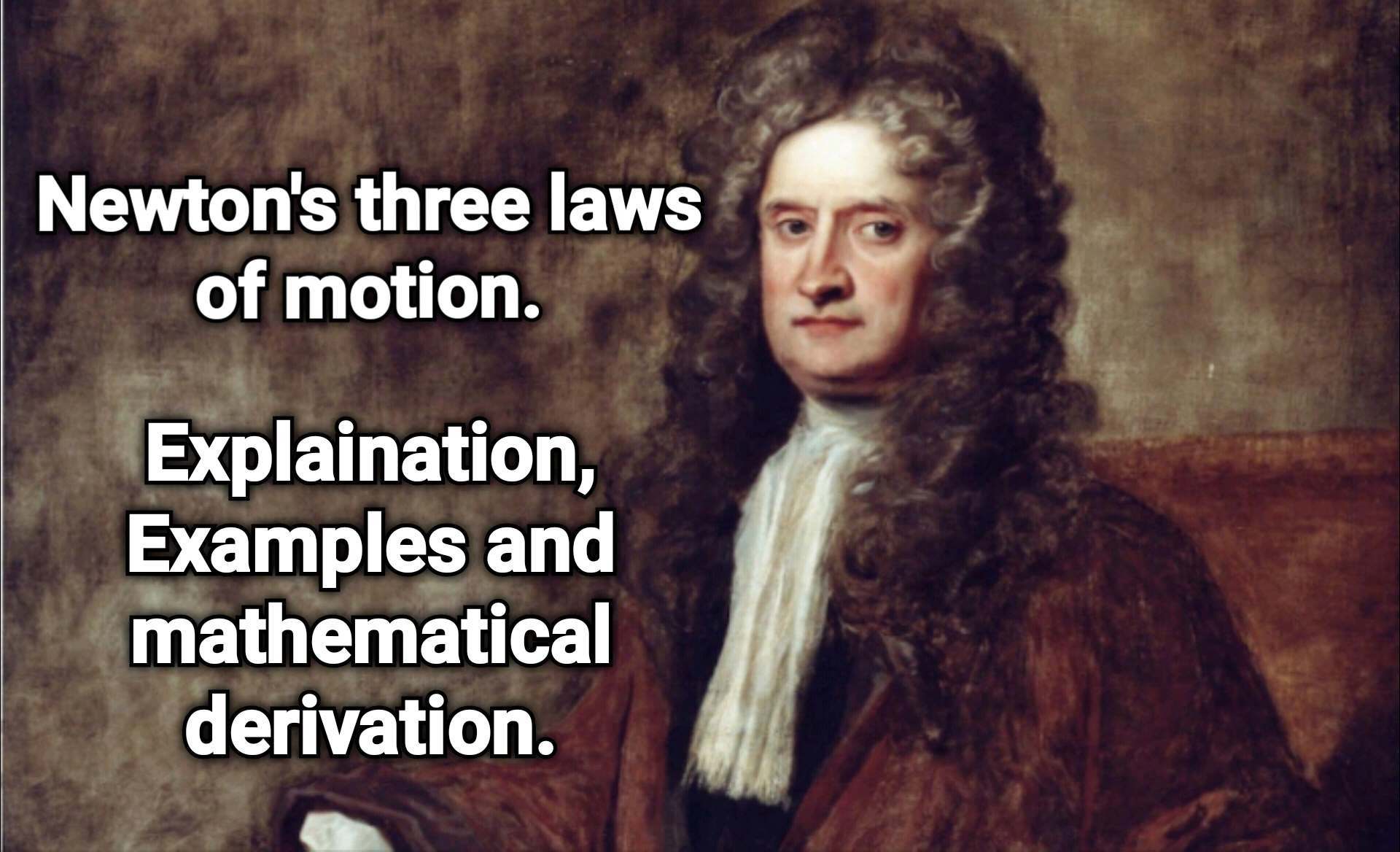Physics class 9
Chapter number 3
Dynamics
State and explain Newton's three laws of motion? Give one example of each.
Newton's laws of motion:
Newton's three laws of motion are fundamental principles that describe the relationship between the motion of an object and the forces acting upon it. They were formulated by Sir Isaac Newton in the late 17th century. The three laws are as follows:
Newton's first law of motion
Statement: The Newton's first law of motion States that "an object in motion will stay in motion and an object at rest will stay at rest unless acted upon by an outside force.
Mathematically: Fnet = 0 then ∆v=0 or a=0
Law of Inertia: Since Newton's first law of motion deals with the inertial property of matter .
Therefore the Newton's first law of motion is called the law of inertia.
Note Inertia: Inertia is the tendency of the body to remain at rest .
Examples: a book is lying on a table will stay at rest forever.
A football is kicked by a footballer will stay in motion but if there is no net force acting upon it.
Limitations:
1) it is failed in case of the elastic bodies
2)It is failed in very strong gravitational fields.
3)It is failed in case of very fast moving atomic particles So this is replaced by Einstein's relativistic mechanics.
4)It is failed in none inertial reference frame.
..........................
Newton's second law of motion
Statement: when a net force is applied on a body it produces an acceleration "a" in a body.
This acceleration is directly proportional to the magnitude of the net force and inversely proportional to the mass of the object.
Mathematically: a α F......1
a α 1/m..... 2
combine relation 1 and 2 .
We get
a α F/m
To change the proportionality into equality here a constant " K" is included.
a=(k) F/m
K= 1
Put the value of K we get.
a = F/m
By rearranging.
ma = F
F = ma ------------equation (3).
Newton's second law of motion, showing the relationship between force, mass, and acceleration.
In this law the net force is equal to the product of mass and acceleration of a body
Examples : For example, if you apply a greater force to an object with a certain mass, the object will experience a greater acceleration. Similarly, if you increase the mass of the object while keeping the force constant, the acceleration will decrease.
Let's consider a specific example: Imagine pushing a stationary car with a constant force. If you push a car with a greater force, it will accelerate faster. However, if you push a car with the same force but increase its mass, it will accelerate slower due to the increased inertia caused by its greater mass.
............................................................................
Newton's third law of motion
Statement : Newton's third law of motion States that action and reaction are equal in magnitude but opposite in direction .
Example:
If body A exerts force on body B then body B will exerts force on body A that force will equal in magnitude but opposite in direction.
Mathematically:. Fab= - Fba
5N =-5N
Here the negative sign shows the opposite direction.
................................................................



